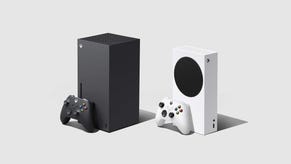D.I.C.E. 08: Build or Buy? The Ubisoft View
Developers took to the stage at D.I.C.E. Summit 2008 to argue the merits of building or buying game technology, with the battlelines being drawn between Insomniac on one side, Epic Games on the other, and Ubisoft stuck in the middle
Developers took to the stage at D.I.C.E. Summit 2008 to argue the merits of building or buying game technology, with the battlelines being drawn between Insomniac on one side, Epic Games on the other, and Ubisoft stuck in the middle
Yanis Mallat, CEO of Ubisoft Montreal, had the final word on the subject - noting that, stuck in the middle of two totally opposite philosophies, he was changing the argument.
His studio had heated exchanges over the issue, but eventually two concepts were at the forefront of their views: emotion and innovation.
"At Ubisoft our mandate is very clear- create the best games in the industry. The fact is that our mandate is not to build the best technology," he said.
"Technology alone doesn't sell. This is not a statement against tech or engineers. It is a statement in favour of innovation."
Mallat noted that emotion and innovation were behind the vast majority of the commercial successes in the gaming industry. Consumers aren't buying games for the technology.
"Technology' main role is to serve creative talent. Quite frankly, code does not translate into emotion."
To prove his point, he asked the audience to explain how it is that the exact same technology can be used for both AAA titles and lower quality products.
Mallat said that there were three layers of innovation: technology, content, and tools. Technology includes elements such as AI, rendering, streaming and physics, but it is the latter two that are most important.
Content innovation consists of gameplay, design, art and animation. To create innovative content, developers need innovative tools.
"The next generation is content driven, not tech driven."
Instead of deciding whether it was more beneficial for a developer to buy or build its tools, Mallat asks simply: "How can we provide creative developers with the best tools to create their vision?"







